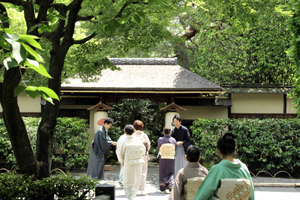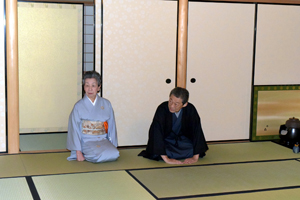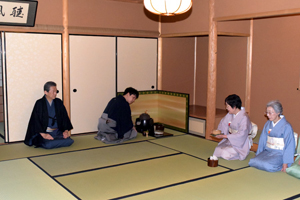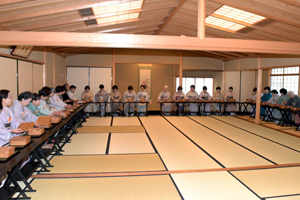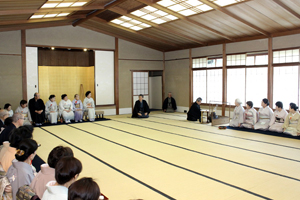To pass through the famous Kabutomon gate of Konnichian, the homestead of the Urasenke Iemoto, and be received for tea by the Iemoto himself, is an event of a lifetime for most teachers and students of Urasenke chado.
On May 17 (Fri), 2019, seventeen days into the new Reiwa Era in Japan, Iemoto SEN Soshitsu XVI (Zabosai) and his wife, together with their son, Takafumi, and nephews IZUMI Soyo (Koichiro) and IZUMI Reijiro, hosted a tea gathering (chakai) at Konnichian, for Urasenke chado teachers who had received Kyoju (full instructor) certification within the last three years. Iemoto and his family initiated this kind of tea gathering last year, as a way to further inspire the enthusiasm of such newly certified Kyoju.
Iemoto and Mrs. Sen greeted the guests In the Chofu-no-ma main room within the Heisei Chashitsu, and then, once the guests had partaken of the omogashi (moist main confection) which were brought in to them, Takafumi prepared koicha (matcha of thick consistency) for them, while Iemoto spoke to them about the ensemble of articles which were being used, and which he had chosen for their enjoyment at this special tea gathering.
|
